Introduced in 1960, the birth control pill simplified the lives of women by helping them take control of their reproductive health. However, the pill has several side effects, and some of them are as serious as blood clots and an increased risk of stroke. Many studies have also found that birth control pills may have a role to play in negative mood changes. So is it true? Is there anything you can do about it? Let's find out now!
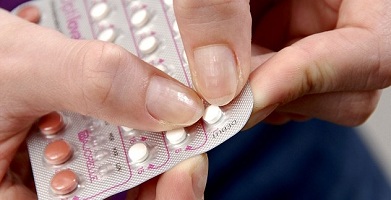
Does Birth Control Make You Moody?
Yes, the pills can affect your mood in a negative way because they contain synthetic versions of the hormones progesterone and estrogen. These hormones can trigger the release of chemicals that inhibit the production of serotonin, which changes your mood.
Does birth control make you moody? Yes, it can, but the severity of the issue may vary. According to the Harvard Study of Moods and Cycles, women who have a history of depression are more likely to experience negative mood changes when taking birth control. However, women who experience cramps and PMS with menstruation as teenagers might actually notice some improvement in their mood and other symptoms after using birth control pills.
Note
Be sure to talk to your doctor if you are experiencing mood changes or any other side effects of birth control pills. Always tell your doctor about your history of mood disorders or depression to help him or her find the best pill for you.
Experiences on Birth Control and Mood Changes
"I started using Alesse but then I switched to the NuvaRing. I was not on any birth control when I first met my FI. We used condoms only in the beginning but then I went back on the NuvaRing. It really changed me. Now, I am easily annoyed and experience serious mood swings as well. I really have to work hard to keep things under control."
"Does birth control make you moody? The answer is yes for me. I am on my first pack of Yaz and have already started noticing change in me. I feel tired and irritable all the time. I even experience bleeding with cramps. Some say the tiredness could be due to bleeding, but I am really not sure what is going on here."
"I have tried a number of birth control pills and felt differently whenever I switched pills. I was tired all the time when I started taking Yaz. I stopped taking it after a while and it took my body some time to adjust–I even had sexual and emotional problems after leaving it. I have also tried Alesse and it was a very bad experience, as it messed my moods up and reduced my sex drive as well. It also made me gain weight, especially in my breasts. I stopped it and the symptoms improved in about a month. I broke out worse with Mircette which was extremely expensive too. It did not affect my sex drive though. It made me feel nauseous all the time. "
Non-Hormonal Contraceptive Options You Can Try
Does birth control make you moody? You already know the answer, and you pretty much have to live with the side effects. However, you can try some other non-hormonal contraceptive options to avoid dealing with these side effects. For instance:
1. Cervical Cap
You will have to go see a healthcare provider to have this flexible cap placed over your cervix. It is important to ensure that the cap stay in place for at least 6 hours after you have had sex. Just do not leave it in your vagina for more than 48 hours. It can cause vaginal irritation and may cost you at least $60 per cap. Its failure rate is between 15% and 30%.
2. Male Condom
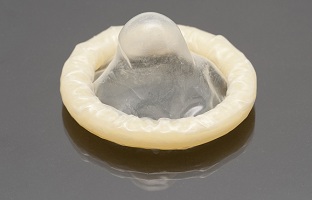 You can find it at retail stores and pharmacies without a prescription. This barrier method has a 15-20% of failure rate, but becomes more effective when used with spermicide. It can cause irritation, especially if you are allergic to latex. It does offer protection against STDs.
You can find it at retail stores and pharmacies without a prescription. This barrier method has a 15-20% of failure rate, but becomes more effective when used with spermicide. It can cause irritation, especially if you are allergic to latex. It does offer protection against STDs.
3. Female Condom
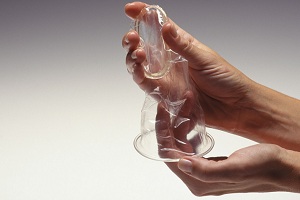 You have to insert it in your vagina–you can place it in up to 8 hours prior to sex. This barrier method is 80% effective but can cause burning, irritation, and rash. Do not use it if your partner is already using a male condom.
You have to insert it in your vagina–you can place it in up to 8 hours prior to sex. This barrier method is 80% effective but can cause burning, irritation, and rash. Do not use it if your partner is already using a male condom.
4. Diaphragm
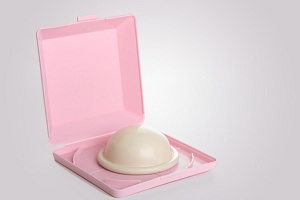 This barrier method involves placing a silicone cup over cervix before having sexual intercourse. When used with spermicide, it becomes more effective. The failure rate is between 6% and 12%, but it offers no protection against STDs. It may cost anywhere between $15 and $75, and stays effective for up to 2 years.
This barrier method involves placing a silicone cup over cervix before having sexual intercourse. When used with spermicide, it becomes more effective. The failure rate is between 6% and 12%, but it offers no protection against STDs. It may cost anywhere between $15 and $75, and stays effective for up to 2 years.
5. Contraceptive Sponge
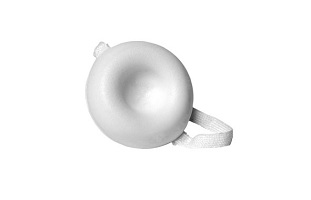 It is basically a foam-like insert that goes in your vagina. Use some water to make it wet before use. You can put it in about 24 hours before sex, but leave it in for at least 6 hours after having sex. A pack of 3 sponges may cost $15-$30. It has a failure rate of 9-16%, but it does not offer any protection against STDs.
It is basically a foam-like insert that goes in your vagina. Use some water to make it wet before use. You can put it in about 24 hours before sex, but leave it in for at least 6 hours after having sex. A pack of 3 sponges may cost $15-$30. It has a failure rate of 9-16%, but it does not offer any protection against STDs.
6. Spermicide
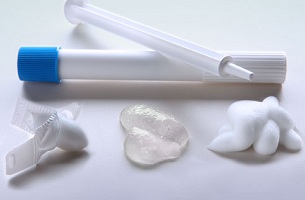 You can use spermicide foams, creams, or vaginal suppositories that contain a chemical called nonoxynol-9 that kills sperm. It is important to use it with a condom to make it much more effective. It may cost $5-$20 for multi-pack and has a failure rate of 15-30%. It offers no protection against STDs when used without a condom.
You can use spermicide foams, creams, or vaginal suppositories that contain a chemical called nonoxynol-9 that kills sperm. It is important to use it with a condom to make it much more effective. It may cost $5-$20 for multi-pack and has a failure rate of 15-30%. It offers no protection against STDs when used without a condom.
7. IUD
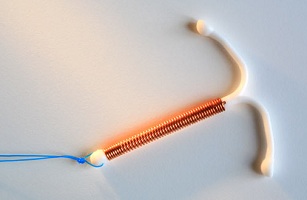 Non-hormonal intrauterine devices are to be put in your vagina within a week of menses onset. You have to replace it every 10 years and may have to deal with some side effects such as heavier and longer spotting or periods. Uterine perforation, pelvic inflammatory disease, and IUD expulsion are some serious side effects. It does not protect you against STDs but it has less than 1% of failure rate.
Non-hormonal intrauterine devices are to be put in your vagina within a week of menses onset. You have to replace it every 10 years and may have to deal with some side effects such as heavier and longer spotting or periods. Uterine perforation, pelvic inflammatory disease, and IUD expulsion are some serious side effects. It does not protect you against STDs but it has less than 1% of failure rate.
8. Natural Family Planning
 You can lower your chances of becoming pregnant by having sex when ovulating. This requires careful monitoring of bodily changes such as body temperature, cervical mucus changes, etc. It is an inexpensive way of contraception, but has a high rate of failure.
You can lower your chances of becoming pregnant by having sex when ovulating. This requires careful monitoring of bodily changes such as body temperature, cervical mucus changes, etc. It is an inexpensive way of contraception, but has a high rate of failure.
